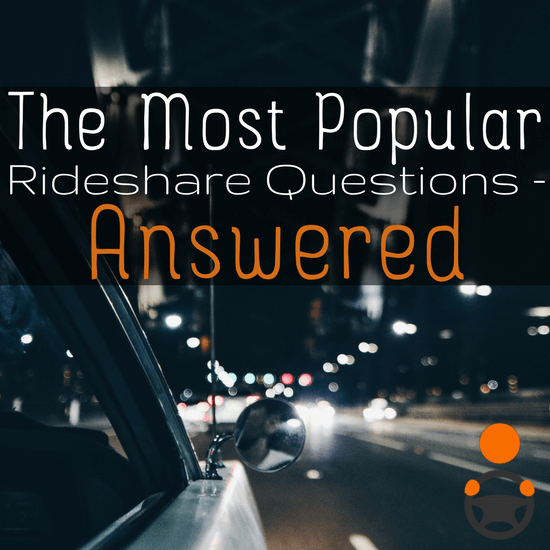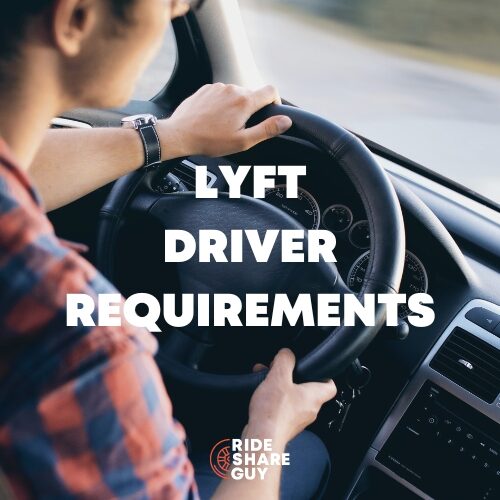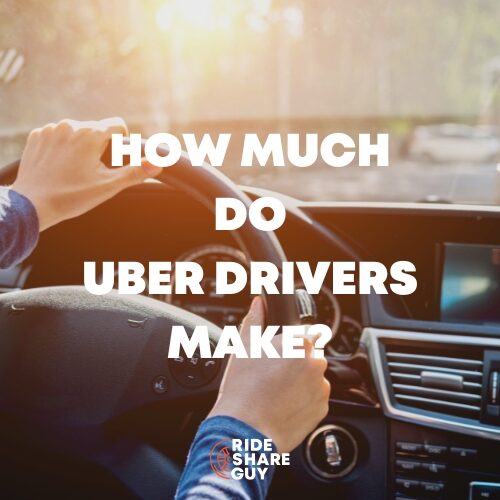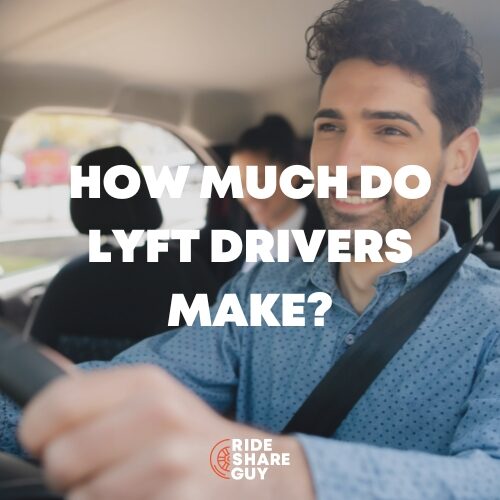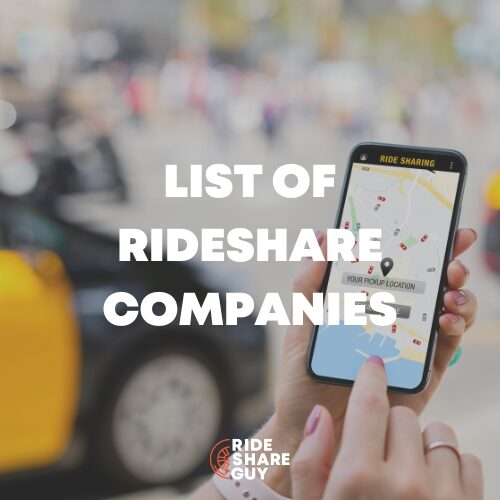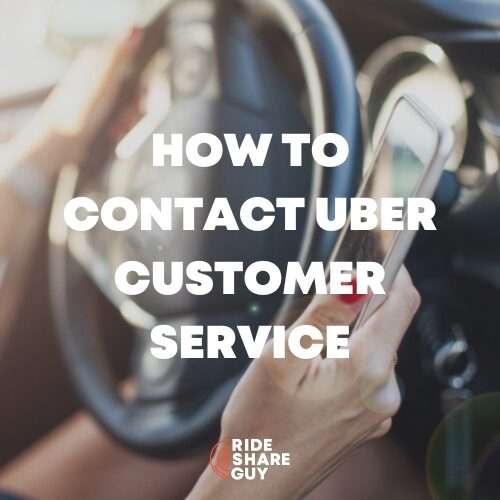Thank you to everyone who participated in last month’s live Q&A on YouTube! Missed the YT Live chat? You can watch a replay here! After the show, we received a lot of great questions from drivers, which made us want to answer all of the questions in one big post new and current drivers could reference.
So today, new RSG contributor Melissa Berry will be answering almost all of the YT Live questions we received in her first ever post for RSG. If we missed any questions, please leave a note in the comment section below.
- How Do I Contact Uber and/or Lyft?
- How Much Can Drivers Make with Uber and Lyft?
- How Can I Beat the Competition and Make More Money?
- How Can I Predict Surge and Always Stay Busy?
- Why Do I Need Rideshare Insurance? Aren’t I covered by Uber and Lyft?
- What’s the Best Vehicle for Rideshare Drivers?
- What’s the Best Phone for Rideshare Drivers?
- Will Ignoring POOL or Lyft Line rides get me deactivated?
- What Happens if I Can’t Find My Passenger?
- Can I Advertise Local Businesses/My Own Business in My Car?
- What Can I Do If a Passenger Asks Me to Do Something I Don’t Want to?
- Do I Have to Provide Child/Infant Car Seats? Do I Have to Take Minors?
- Which Map App is the Best for Drivers?
- How Can I Improve My Ratings?
How Do I Contact Uber and/or Lyft?
One of the best and fastest ways to get a response is through your Uber driver app.
To contact Uber, you’ll want to open your app, go to Help, and then click on the top issue you’re having (Payments, Trips, Advice, etc.) and submit your question.
Related: How to Contact Uber Support
Having trouble reaching out to Uber through the app? Click here to submit a question or concern here.
Uber has also recently rolled out 24 hour phone support, so make sure it always check your driver app for the latest Uber support numbers.
If you’re unable to access the app, these numbers may help you get in touch with support:
- Uber Phone Support: (800) 593-7069
- UberEATS / Delivery Support: (800) 452-9029
- Uber Critical Safety Response Line (800) 285-6172 (Only for emergency situations – call 911 first, then call this number to report the incident to Uber)
Related: Top 9 Ways to Contact Uber Support When You Need Help
Contacting Lyft works much the same way. You’ll want to reach out first via the app, if possible. Simply click on your picture → Help → Help Center for most inquiries, then scroll down to your concern/question or “Contact Support” to ask a specific question.
Lyft and Uber are also fairly responsive on Facebook and Twitter. To contact Uber, tweet at @Uber_support with your question or concern. For Lyft, tweet at @askLyft. Keep it brief (as Twitter requires) and don’t send too many messages for them to follow. Uber or Lyft should get back to you within business hours via a “reply” or a direct message (DM).
Uber and Lyft also offer physical locations in some cities for you to visit if you need in-person assistance. Lyft offers a helpful list of hubs nationwide here.
For Uber, you can find the information on your local Greenlight Hub here. Scroll down to “Local Infomation” and click “Get The Details.” From there, click “Contact Uber” and it will bring you to your local Greenlight Hub page with hours and location info. The URL will look like this (using Los Angeles as an example).
Related: The Best Ways to Contact Lyft When You Need Help
Remember, the more specific and precise you can be when asking a question or presenting a concern, the more likely you are to get a response from an actual human. It helps to have dates, times and even dash cam footage of your concern or question so that Uber or Lyft has to respond.
Related: How Do I Get Help at the Lyft Hub?
How Much Can Drivers Make with Uber and Lyft?
This is an easy and not-so-easy question: it depends! A lot goes into earnings, including:
- When and where you drive
- Surges, bonuses, etc.
- Tips
- Your schedule
Related: How Much Money Can an Uber and Lyft Driver Make in 2017?
In general, drivers can make $15-20 an hour depending on the factors listed above. Specifically, in our rideshare survey, we found drivers make $16-18/hr before expenses.
Want to see how much you can make in your city? Click to read In Which Cities Do Uber Drivers Make the Most Money?
Related: Is It Better to Drive During the Day or At Night?
How Can I Beat the Competition and Make More Money?
If it’s a regular day/hour with no major event or end-of-night bar exodus, familiarize yourself with your city. Is it lunch, and people want food delivered? Hop on your favorite delivery apps. Is it a Monday or Friday when business travelers are heading to or coming back from the airport? Turn on your destination filter and head toward the airport (turn on the destination filter so you can maybe pick up a ride to the airport instead of deadheading it).
Related: How to Use Destination Filters to Increase Your Profits
Looking for more suggestions? If you really want to step up your game and turn your rideshare driving into more of a business, check out Maximum Ridesharing Profits. MRP is designed for drivers looking for advanced strategies: how to pick up more passengers, maximizing profits, and building a side business.
Related: One Year of Maximum Ridesharing Profits
How Can I Predict Surge and Always Stay Busy?
It’s tough to predict surge, but one thing is certain: you don’t want to chase surge. Pay attention to the busy times in your city, like rush hour, downtown after the bars and clubs close, and events in your city. Try to place yourself in these busy areas ahead of time. For example, if your city has a football team, try to be at the staging/parking area or an area close by about an hour or less before the game gets out.
You can also use apps like Surge, as recommended by one of our podcasts guests, Sam Choi. Sam regularly makes more money than the average driver because he’s learned how to figure out and capitalize on surge – but he also uses apps to help him plan his strategy.
Related: Sam Choi on Outworking and Outearning Other Rideshare Drivers
You can also stay busy by driving for delivery companies when it’s slow. You have a lot of options, including:
Related: What Are My Favorite Delivery Apps?
By driving for rideshare and delivery, you should consistently receive pings, whether it’s a rideshare ride or a delivery order.
Why Do I Need Rideshare Insurance? Aren’t I covered by Uber and Lyft?
Rideshare driving is divided into three periods: period one is when you’re online waiting for requests, period two is when you’ve accepted a request and are en route to pick up the passenger, and period three is when you’ve acquired the passenger and are driving to their destination.
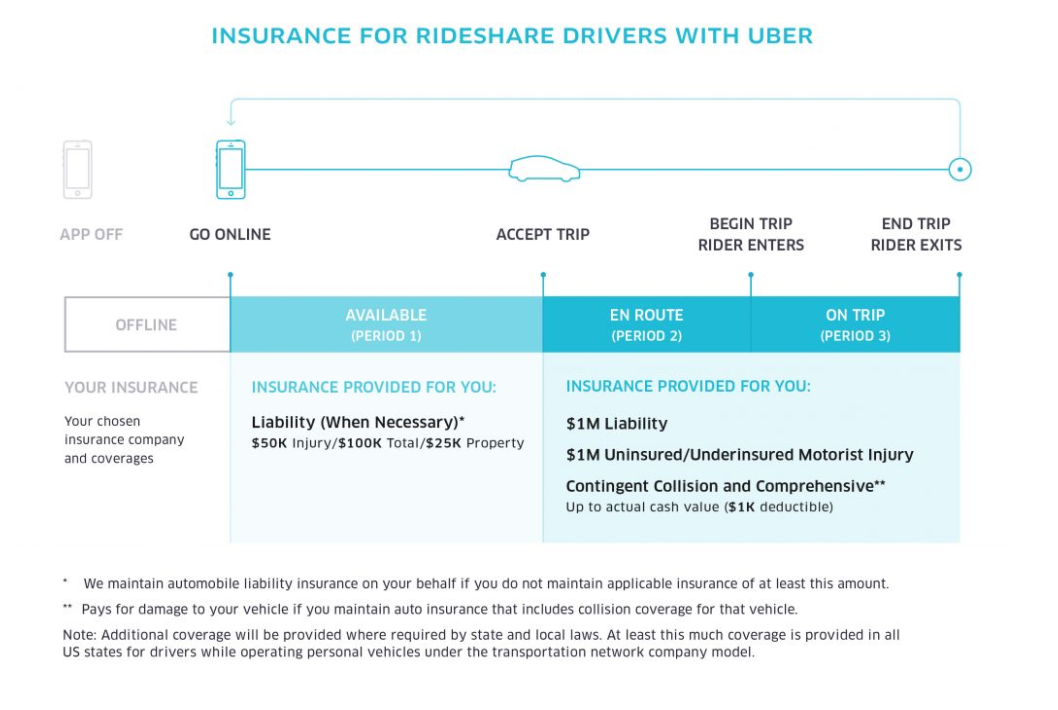
During period one, you won’t receive any collision coverage – and the liability limits are much lower than normal. One nasty accident could quickly exceed them, putting you on the hook for many months’ worth of earnings. During periods two and three, Uber and Lyft provide commercial insurance with $1 million in liability but $1,000 deductible on Uber and $2,500 deductible on Lyft.
Another issue is that personal insurers reserve the right to nullify your coverage entirely if you violate their terms and using your vehicle for commercial purposes (such as Uber, Lyft, or food delivery) is one such violation. If (or when) your personal insurer finds out you’re a rideshare driver, they might drop you from your policy and/or deny coverage.
Related: 11 FAQs About Rideshare Insurance
What’s the Best Vehicle for Rideshare Drivers?
This is a really popular question, but there’s no one right answer! Choosing the best vehicle as a rideshare driver involves many factors, including:
- Gas mileage – this is why a car like the Prius usually rates highly among rideshare drivers, but it’s not the only car out there with great mileage
- Price – what can you afford? The best car for you is the one you can afford to get (within reason!) Is your vehicle too old for rideshare driving? Check out our vehicle marketplace for some leasing or rental options
- Comfort/style – even part time drivers will be in their cars a lot, so having a comfortable ride as a driver is just as important
Related: Why a Brand New Prius isn’t Always the Answer
If your vehicle will be used for rideshare and personal use, you’ll want to think about how your family uses your personal vehicle. A compact car might be fine for ridesharing, but a van may be more practical for your family.
Related: Is a Toyota Prius the Best Car for a Rideshare Driver?
The key to driving efficiently, working smarter and not harder, is always tracking your miles while you’re rideshare driving. Check out our top recommendations for mileage tracking apps here.
What’s the Best Phone for Rideshare Drivers?
Much like the question about the “best vehicle” for rideshare drivers, the best phone for rideshare drivers also depends a lot on your own preference, affordability, platform, etc. with one major difference.
First, many of us are already partial to one “type” of phone – Android or iOS. Both platforms are compatible with the Uber and Lyft apps, plus all of the delivery apps as well. Mystro, a rideshare driving app we highly recommend, only works right now on Android phones but will be rolling out an iPhone-compatible version too.
The major thing to be aware of? After your car, your phone is your second most important tool. Whichever one you choose, make sure to get a newer version with plenty of storage, the ability to use data, and accommodate multiple apps (like Google Maps, Waze, Mystro, etc.). Uber and Lyft regularly push out app updates, too, so make sure your phone has room to accommodate those updates.
Related: How Much Data Will a Rideshare Driver Use?
Harry currently uses a Samsung Galaxy S8, while I use the iPhone 7+. I like the bigger screen – it’s easier for navigation and a big screen makes it less likely I’ll hit the wrong button on accident (ending a trip early or accepting a trip when I really meant to log off). A smaller phone will work fine for rideshare drivers. The important thing about your phone is the ability to accept rides through Uber/Lyft, handle navigation apps, and have the room the accommodate app updates.
Related: Top Phone Mounts for Rideshare Drivers
Will Ignoring POOL or Lyft Line rides get me deactivated?
Ignoring UberPOOL or Lyft Line ride requests will no longer get you deactivated! You can ignore or decline these rides entirely if you’d like, although it will affect your acceptance rate. If you’re trying to go for a bonus that requires a certain acceptance rate percentage, and you get a lot of POOL or Line requests, it’s probably in your best interest to accept them.
Also, declining rides may not get you deactivated, but it’s not to say you won’t be put in a “time out” for too many declines.
Related: How to Take Advantage of Uber’s New Acceptance Rate Policy
So how can you get around some of the hassle of POOL or Line rides? You can download Mystro and set your filters to screen out POOL and Line rides. This app will keep your eyes on the road and your peace of mind, knowing Mystro will only accept the rides you tell it you want.
While some of us don’t like UberPOOL and Lyft Lines rides, you could follow RSG contributor Curtis and learn to like POOL/Line rides.
What Happens if I Can’t Find My Passenger?
There are plenty of reasons why you may not be able to find your passenger, including a busy, crowded event or a misplaced pin. Regardless of the reason, you want to find your passenger quickly and get on the road.
The first thing you should do is make sure you’re in a safe location – not double parked, not in a firelane, not at a stoplight. If you can’t quickly find your passenger, pull over where it’s safe, even if that means your passenger may have to walk.
Next, notice identifying features of your car: do you have your hazard lights on, or your Lyft Amp, or is your car a bright, distinguishing color? Once identified, text your passenger and say “I’m in the purple car at the cross streets of [your cross streets]” Make sure to give your passenger street names so it’s easier for them to see where they are in relation to you.
If you still can’t find them, you may need to call them and ask them to describe their area. This can be difficult depending on how inebriated they may be, or if they’re a tourist, so this is when it pays to know your area. Know the popular bars or at least the popular cross streets near busy bars and clubs, if you drive during those times.
Related: How to Pick Up Passengers Like a Pro.
Can I Advertise Local Business or My Own Business in My Car?
Yes, you can advertise for local businesses or your own business in your car. One of the easiest ways to make some extra cash in your car is by offering snacks. You can either offer your own assortment for sale, but I recommend you sign up with Cargo and use their system to pay for and provide snacks, cords, wipes, etc.
Related: Cargo Pays Rideshare Drivers to Hand Out Snacks to Passengers
Have your own business? You’ll want to listen to this podcast, Kyle Reninger on Driving for Uber in a Super Small Market, but a main takeaway is you can use your rideshare time as an opportunity to discuss your own business. Kyle and his wife own a bakery, so it’s easy to work in talking about delicious baked goods, but even if your business isn’t food-related, you can still bring it up.
To advertise for local businesses, you’ll have to network and see what opportunities exist. You may want to attend a meeting put on by your local small business association, or reach out to friends/family who own their own businesses to see if they’d be willing to give you a cut of whatever business you drive their way. The sky’s the limit on how and which businesses you ask.
What Can I Do If a Passenger Asks Me to Do Something I Don’t Want to?
Passengers can ask for a lot of random stuff: can I bring a dog, will you help me with my groceries, can you carry this? In many cases, helping passengers is up to you. You don’t have to agree to anything if you don’t want to, don’t have time, or physically can’t. As a rideshare driver, your job is to get people from A to B safely.
That said, there may be times when you don’t mind going through the drive-thru or helping someone struggling with their groceries. Just don’t expect anything in return: Uber/Lyft won’t reimburse you even if a passenger “promises” to leave you a tip but doesn’t. Helping is a judgment (or maybe karmic) call for you.
Related: How to Make Stops with the Uber Driver App
If you can’t or don’t have time to accommodate the passenger, be polite and try to explain why you can’t do that. If a passenger gets angry, it can help to white lie (“sorry, I can’t drive you an hour away, I have to be back to pick up my kids/have dinner with my spouse/go to a doctor’s appointment”).
Related: What Do You Do If a Passenger Wants to Stop at a Liquor Store?
One major reminder: Rideshare drivers have to take service animals no matter what. All of the terms of service require drivers to acknowledge and accept this requirement, so even if you didn’t read the terms, you did agree to accommodate service animals as required by law.
Related: Do Drivers Have to Accept Passengers with Service Dogs?
Service animal or not, you’ll want to keep things, like towels and wipes, in your car for spills or accidents. People and animals can be messy, so you’ll want to at least consider investing in floor mats and/or towels as a rideshare driver.
Related: 11 Products Every Rideshare Driver Should Be Carrying
Do I Have to Provide Child/Infant Car Seats? Do I Have to Take Minors?
No, drivers are not expected to provide child/infant car seats, nor do they have to take small children without booster seats. If you do decide to take an infant without a car seat, keep in mind this is a big liability issue. If you get into an accident with an unrestrained infant… well, you can imagine the myriad of terrible things that could happen, regardless of what type of insurance you have.
It also could be illegal in your state to have an infant ride in someone’s lap, so even if a parent insists, we recommend not taking children who should be in booster/car seats in your car.
Related: Are Uber Drivers Allowed to Transport Minors?
As far as underage passengers, this depends on how the ride was requested. In a majority of states, account holders cannot request a ride for a minor (under 18) nor can a minor request a ride using their parents/siblings’ accounts.
However, in select cities, Uber has rolled out UberTeen. UberTeen is part of a “Family Profile” where account holders (presumably parents) add their over 13-year-old minors to their account, thereby allowing the teens to request an Uber ride.
Uber will pay drivers $2 extra to shuttle teens around, so that request might be worth it to accept.
Keep in mind if you do say “no” to driving an infant without a car seat, or a child (if not requested through UberTeen), parents might get mad at you or berate you. For unruly or angry passengers, we always recommend drivers invest in a dash cam to protect themselves and for proof in case Uber/Lyft gets involved.
Related: The Most Epic Dash Cam Review for Rideshare Drivers Ever
Which Map App is the Best for Drivers?
Google Maps and Waze are the best map apps for drivers, and between the two of them, you can view a showdown here: Who Would Win in a Fight, Google Maps or Waze?
Don’t just rely on one map app to get you around though. What happens if you get in a dead zone and your map app stops working? It pays to be familiar with your city (and possibly even surrounding cities) but, if you’re new to your city, definitely keep a paper map in your car.
Related: 6 Tips to Become a Better Uber/Lyft Driver
How Can I Improve My Ratings?
One of the best ways to improve your ratings is by understanding what passengers want – but how do you do this? By taking a ride (or several!) as a passenger. It’s the number one tip for all drivers, not just new drivers.
Haven’t taken a rideshare ride yet? Click here to get $20 off your first ride with Uber here, and click here to get your first ride with Lyft free.
Related: What Can I Do to Improve My Driver Rating?
After you’ve taken a few rides as a passenger, make note of what drivers did that you liked, what you didn’t like, and think about how you can use what you learned as a driver.
A few more keys things that help drivers get good ratings:
- Good navigation – use a map app and become familiar with your city
- Efficient service – get to your destination as quickly as possible – if you know a true short cut, let your passenger know you’re taking a short cut to get them there quickly and safely
- “Reading” your passenger – not every passenger will be interested in talking to you, while others may want to be your best friend! Others may be tourists with lots of questions – it’s a skill to read people, but if you can learn this skill, you’ll be on your way to higher ratings
Related: Why is Navigation So Important for Uber Drivers?
Did this FAQ help to answer your questions? Feel free to bookmark this page, especially new drivers, so you can reference it later! Let us know in the comments if there’s any questions we missed.
-Melissa @ RSG
